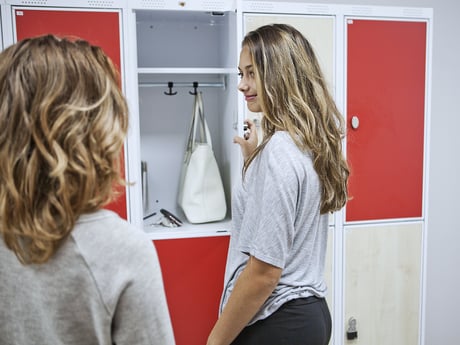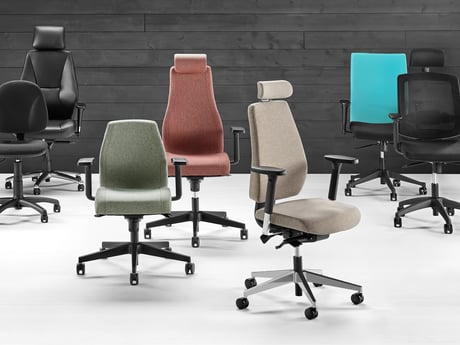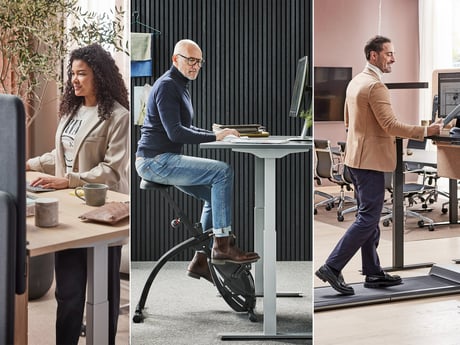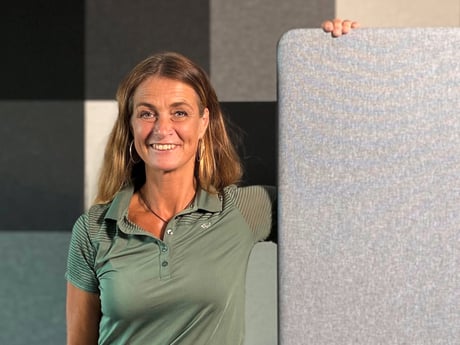- AJ Products UK
- Blog: Tips to Inspire Happiness at Work
- Ergonomics in the workplace
- AJ Products and ukactive address the issue of sedentary behaviour
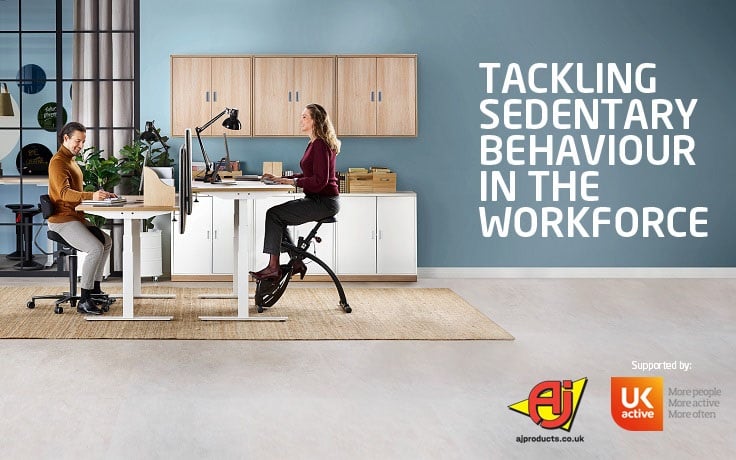
AJ Products and ukactive address the issue of sedentary behaviour
The COVID-19 pandemic has caused an alarming drop in physical activity levels among adults in the UK while sedentary behaviour, such as prolonged periods of sitting, has risen due to stay-at-home restrictions. It has exacerbated an existing problem: back in 2019, a quarter of UK adults were already classed as inactive. As we gradually come out of lockdown, we, as a nation, need to look at ways to prioritise physical activity and encourage people to move more. One of the most important areas to look at will be our workplaces.
In a comprehensive study into the state of workplace health, AJ Products and ukactive have teamed up to look at the risks associated with long hours spent sitting at work and what can be done to improve physical activity. We ask how our office spaces must change and what companies can do to support workers both on- and offsite.
You can download the Tackling sedentary behaviour in the workforce report for free. The report also brings you real-world solutions from businesses already running successful wellbeing programmes to provide a ‘best practice’ guide that will serve as inspiration for how to get started. Here are some of the key takeaways from the report.
Many companies may embrace a blended approach to working, resulting in a hybrid model where employees work some days a week in the office and some days at home. The report looks at a number of examples of leading businesses and the different approaches they are planning in order to give employees a new level of flexibility post pandemic.
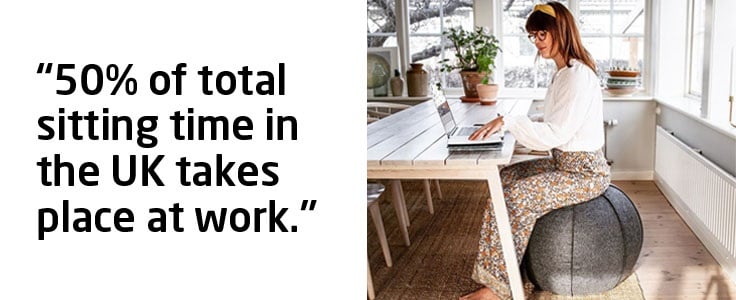
The key is to talk to the people you’re trying to help. Involving employees at the very start of any workplace wellness initiative to find out what they want to get out of it and what they think it should offer will ensure your scheme is successful, and that both your business and your staff reap the rewards.
You can download the Tackling sedentary behaviour in the workforce report for free. The report also brings you real-world solutions from businesses already running successful wellbeing programmes to provide a ‘best practice’ guide that will serve as inspiration for how to get started. Here are some of the key takeaways from the report.
The challenges of home working
Home working has only added to the problem of sedentary workdays thanks to cramped surroundings, makeshift desk setups and less opportunity for exercise. With thousands of people still working from home, the report looks at the legal responsibilities that employers have towards remote workers and offers businesses advice on how best to support in order to improve both employee wellbeing and productivity.Returning to the office and the hybrid model
As lockdown restrictions ease, businesses are now planning a return to the office. But, after a year of working from home, employees will likely be anxious about returning to the workplace and may find being back in an office environment overwhelming. Employers need to be sensitive to employee concerns around:- Commuting
- Being back in close proximity with others
- Being able to concentrate and readjust to an open office environment
Many companies may embrace a blended approach to working, resulting in a hybrid model where employees work some days a week in the office and some days at home. The report looks at a number of examples of leading businesses and the different approaches they are planning in order to give employees a new level of flexibility post pandemic.

Improving the workspace
The office is one of the biggest contributors to sitting time, but it is also one of the places with the most potential for addressing the problem. Now is the perfect time to reimagine your workplace and think about how you could make it better for those who work there. Changes to office design could include:- Using signs and posters to promote the use of the stairs over the lift
- Placing printers or other communal facilities away from the main desk area
- Installing secure bike storage and showers to make active commuting easier
- Introducing a variety of active workstations, such as sit-stand desks or pedal exercisers
- Creating different zones to encourage people to change where they work throughout the day
Changing attitudes
However, these changes can’t be made in isolation: the physical workspace is one side of the issue, the other is attitude. Changing workplace behaviour and company culture is just as important. Interventions to increase physical activity levels during the work week could include:- Negotiating a corporate discount with a local gym
- Organising lunchtime walking, running or yoga groups
- Improving flexible working to make it easier for employees to carve out time for exercise while juggling work and home responsibilities
- Running a companywide fitness challenge for charity
The key is to talk to the people you’re trying to help. Involving employees at the very start of any workplace wellness initiative to find out what they want to get out of it and what they think it should offer will ensure your scheme is successful, and that both your business and your staff reap the rewards.
How to get started
The report features case studies from businesses of all sizes that highlight employee wellbeing programmes that have worked effectively and will help guide you on how to implement a similar scheme in your business in the future. Ideas include:- an app to track collective and individual miles as well as other activity statistics to incentivise employees to leave their desks and be active
- fitness mornings
- subsidised Pilates classes
- monthly wellbeing roundtables
Download the full report for free here.
Get the latest product launches and offers sent direct to your inbox
Do you want to receive exclusive offers, information about new products and inspiration on how you can improve your workplace? Sign up for our free newsletter and be the first to receive our best offers!Please wait...
*By clicking subscribe, I confirm that I have read the privacy policy.
